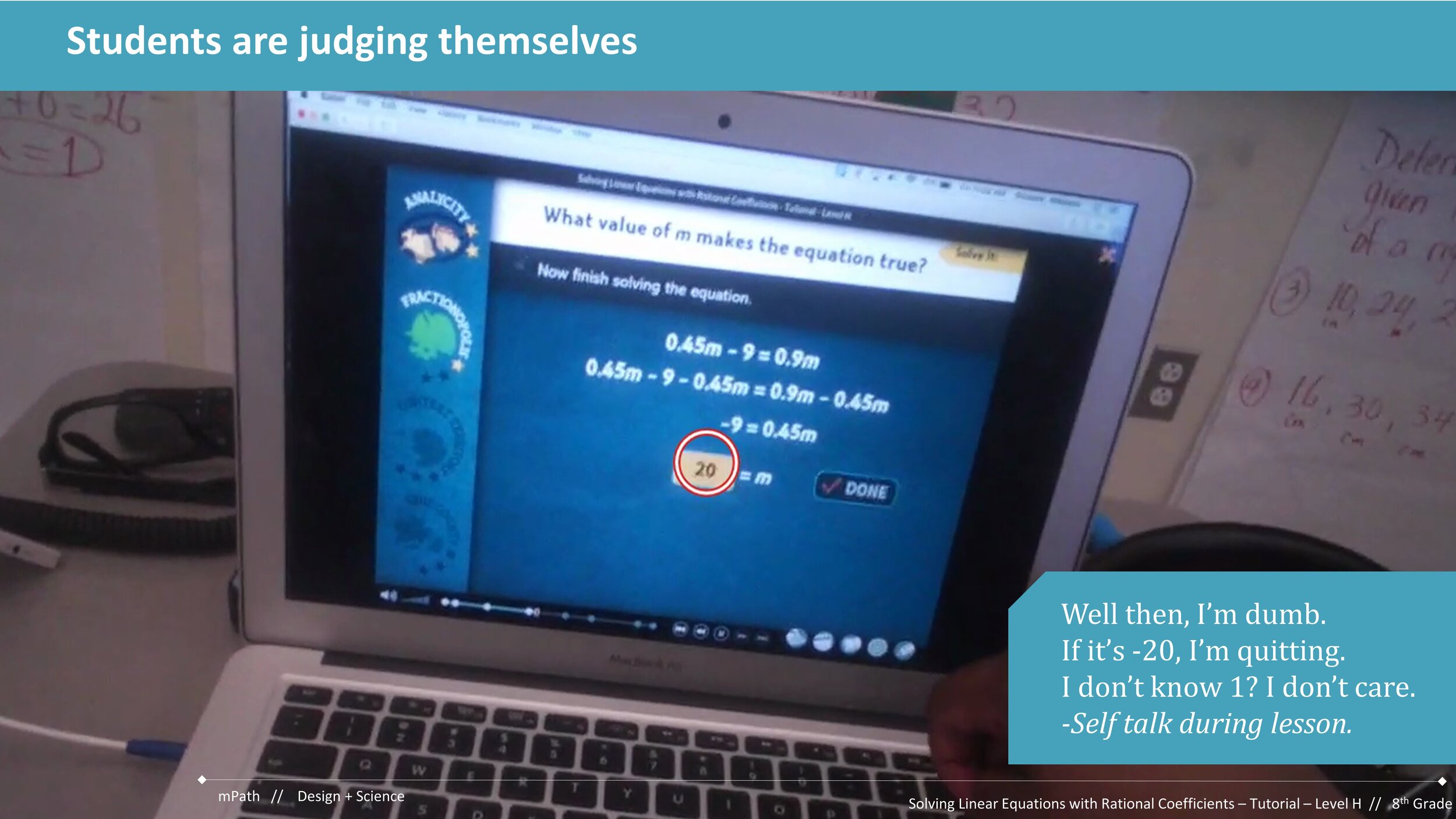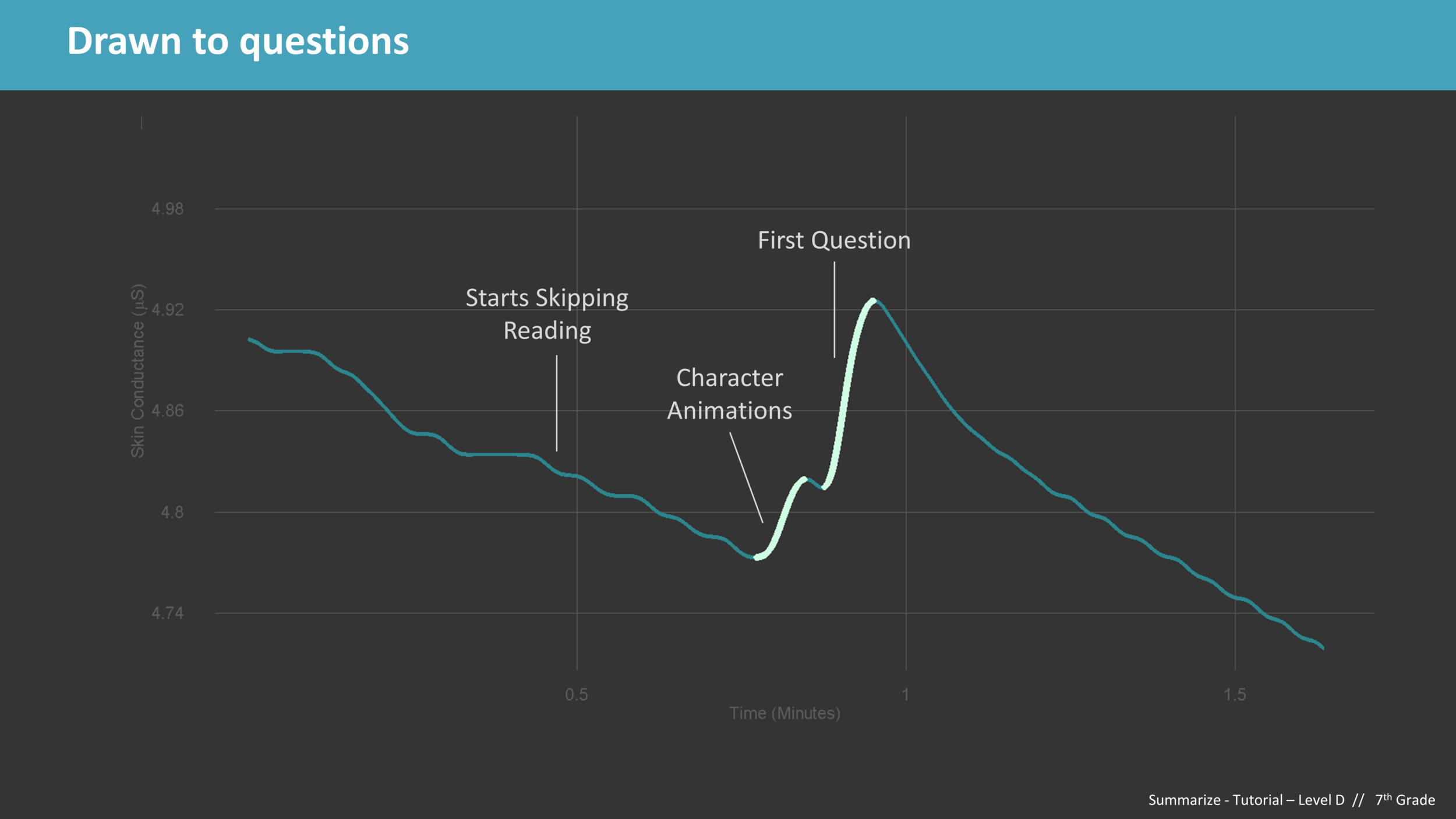Mapping the Emotional Experience of Digital Education (Middle School)
We visited three Title 1 schools and observed how they used digital learning software in an effort to understand how to make better products. We also observed children at home while they played video games to better understand what motivated them.
Outcome:
We helped delineate what middle school students needed from learning software that was primarily designed for elementary school students. Our insights lead to the improved design and effectiveness of new middle school lessons.
Our Team:
Garrett Hedman, Meredith Wilson, Christine Zanchi, Elysa Greenberger, Sara Stump
Tie Grades to Learning Moments
Before: Grades mark completion
Students cared a lot about passing the lesson and getting a final grade. But this grade was not tied to the lesson and practice problems, so students skipped the learning and feedback moments, not paying attention to moments where they could learn.
After: Grades during learning
During the test without feedback, we saw students much more focused and engaged, unfortunately when they were not given feedback or guidance. Children were not able to make the connection that if I learn this now, I’ll do better on the test. We recommended that grades should be more integrated into the entire lesson, not just the evaluation at the end to help motivate children to focus and care about answering correctly throughout.
Bring Teachers In
Before: Teachers Behind the Scene
Teaching software typically leaves teachers out of the learning. Students were expected to use the software with little teacher acknowledgement or expectation. In classes with permanent subs, very few children every used the educational software in class.
After: Bring Teachers to the Forefront
The most impactful classrooms were the ones where teachers were heavily involved with how their students used their software. We encouraged our client to find more moments for teachers to connect with students. For example, students could be asked to verbally share their grade with their teacher when they are finished or software could more clearly outline how far children are to completing teacher’s weekly expectations.
Remove Teaching through Audio
Before: Passive Audio as the main teaching format
Most lessons were taught via audio instructions. However, we noticed that most students in Middle School don’t wear headphones at all - they want to get straight to the questions, uninterested in what the software had to say.
After: Interactive Problems as the start of learning
We recommended future lessons cut out as much audio as possible in the lessons. Instead, students should be given opportunities to “pull” for written information. The best time to offer help on a math problem is when a child is stuck trying to figure out a problem and is seeking help - not before hand and not passively.

Some students will stop using educational software as soon as their teacher stops monitoring them.

In Middle School students start doubting themselves and thinking themselves stupid when lessons get hard.

We noticed that students were avoiding the moments where they had to think or struggle through a problem, instead going to moments of high arousal: specifically getting an answer correct.

The team was debating whether to rely on internal or external motivation for middle school students. Grades had squashed most children's natural desire to learn.

Some How Might We questions generated from this research.

Initially the team thought games would disengage middle school students, but simple games were actually some of the most motivating moments.

We worked with our client to reimagine how teaching could happen beyond passive audio pushing information on middle school students.

A 6th grade student fails to be motivated during a lesson, but cares much more during the quiz he is being evaluated on.

Answering questions (especially ones that are graded) are a major motivate for middle school students.



